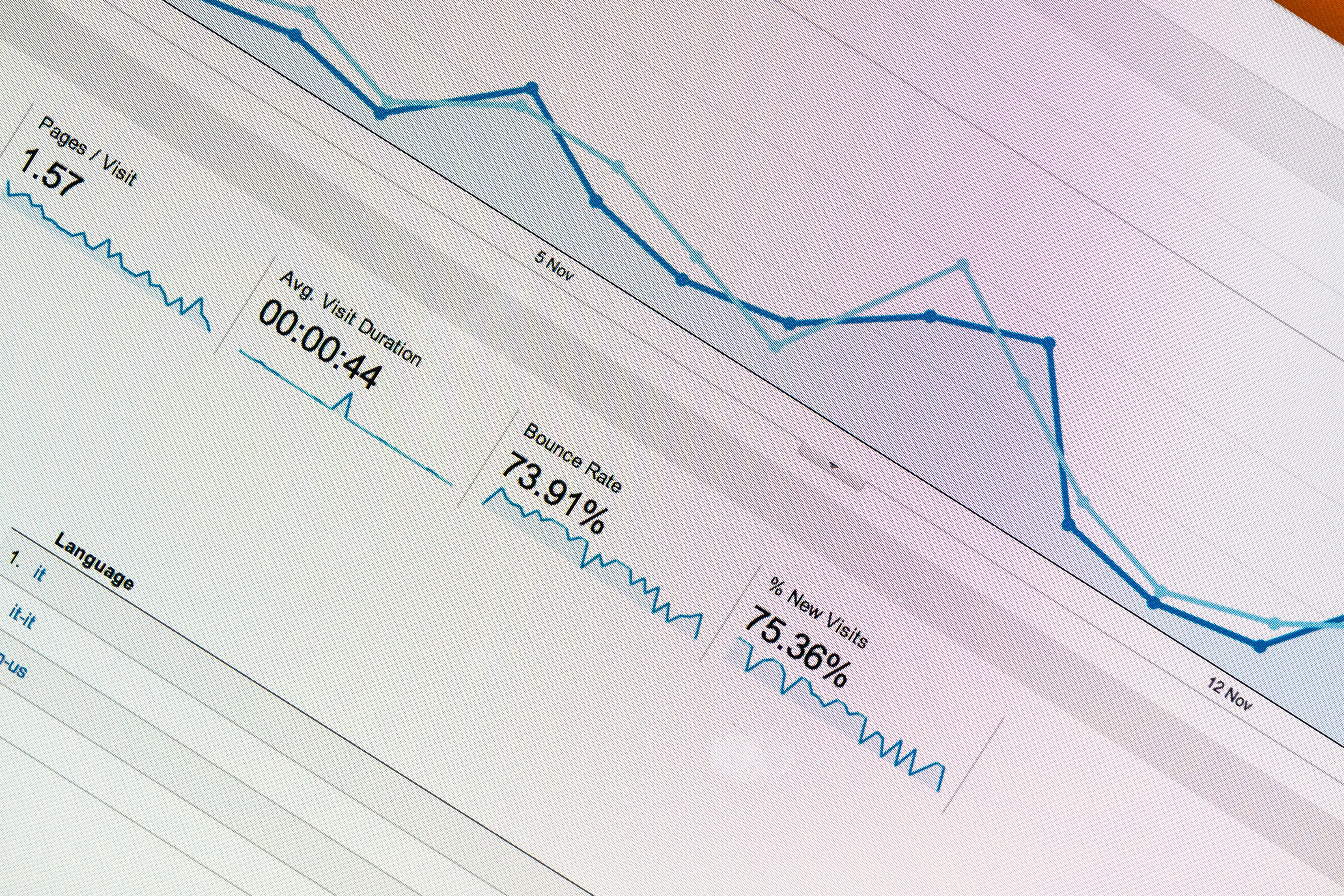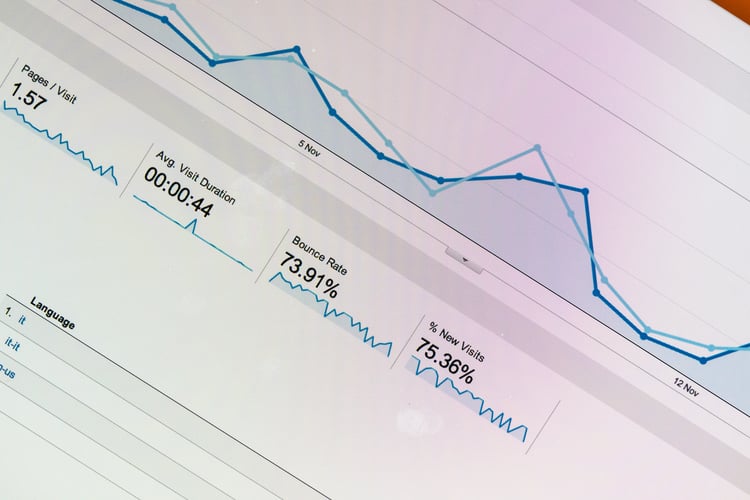Blog series: Analytics for improving your system's performance
By Jordan Bartlett on Thu, May 04, 2017

Part 2: Understanding your audience through website analytics
Organizations are increasingly using the web to interact with their customers. Besides websites, web portals are becoming a ubiquitous component of organizations’ customer service strategy. These technologies allow customers to serve themselves and satisfy their need for instantaneous information. However, as self-service is replacing traditional customer service methods, organizations may be lacking critical information about their most precious asset.
The prevalence of web-based customer service has created a heightened need for web analytics. By obtaining and analyzing web analytics, organizations can obtain a fairly clear picture of their customer’s needs and actions. According to DeMers, “No matter what industry you’re in or what your approach is to marketing and advertising, understanding your audience better will allow you to improve your practices and increase your customer loyalty and retention.”[1]
Chris Davis, web designer at the Public School and Education Employee Retirement Systems of Missouri (PSRS/PEERS) understands that metrics are pivotal when conducting an analysis of the systems’ core audience. To help the system obtain more information on their members, retirees and employers, Davis integrated Google Analytics (GA) with the systems’ website, web member services (WMS) portal and employer web portal (EWP) a couple years ago.

While GA offers myriad advanced data acquisition features, Davis said he mostly refers to GA’s standard data. One data set that Davis said is particularly useful relates to technology usage. “By tracking what browsers and devices people are using to access our website and portals, it gives us insight when we are making technology-related decisions,” said Davis.
Davis also pays special attention to acquisition data, which sheds light on where users are coming from – whether it is from direct traffic, a referral from another website or a social media post. “We also utilize Google Custom Search to power our website’s onsite search feature so Google Analytics provides information about what people are searching for on our website, said Davis. “For instance, in January and February we commonly see searches related to filing taxes.”
Although demographic and acquisition data are undoubtedly useful, much of what Davis said he pays attention to relates to what the systems’ members and retirees are doing on the website or portals. By paying attention to page views, “we can see what the most interesting pages are on the website or application and what it is that people are coming to the site to do,” explained Davis.
GA automatically provides metrics on page visits, but to understand what users are doing on an individual page, one has to take advantage of GA’s advanced features. By utilizing GA’s event tracking functionality, Davis is able to track what links within a respective page were clicked. “In our case, we have a lot of PDF forms so we can track what forms are being downloaded on a monthly basis and how many people are downloading them,” said Davis.
Currently, Davis manually tags the events he wants to track by manipulating the code - adding what is known as a JavaScript event listener, which passes the necessary data to the GA tracking script when a user clicks on the link. The process of tracking activity at the individual page level through GA’s event tracking feature has undergone a vast improvement, however. Now, by utilizing Google Tag Manager in addition to Google Analytics, non-IT staff can modify their analytics without assistance from IT staff, said Davis.
In addition to event tracking, Davis uses an advanced feature called Goals to track users’ activity on specific web pages. Within the WMS portal, for instance, the systems’ members and retirees can perform multiple-step processes such as account registration or completing a retirement application. To obtain information on the success rate of those processes, Davis has defined a goal for each linear process – the goal being the final step in the process. In the above example, the goals would be successfully setting up an account or submitting a retirement application.
“Once you define the goal, you back out from that and define all of the steps in the process and then Google Analytics tells you how many people completed the respective goal," said Davis. “This is beneficial from a technical and communication perspective because you can learn where people are dropping off the process. You can then analyze why they may be quitting the process early and it gives you data you can work with when improving the portal’s user experience.”
After capturing the data, Davis uses GA’s default reporting functionality to inform PSRS/PEERS’ management about what their members, retirees and employers are doing on the website and portals. The monthly report that Davis supplies to the systems’ management includes an amalgamation of data from the website, WMS and EWP. However, he also configured Google Analytics so he can track the website, WMS and EWP sub-domains as separate, isolated properties with a single GA tracking script. This allows him to analyze data specific to a particular property without any “noise” from the other sub-domains.
Besides the composite reports, Davis also references GA’s reporting dashboard that shows real-time metrics: how many people are on the website or portals, where they are coming from, and top keywords and referrals, among other data. This reporting functionality is more than an input into real-time business decision making – it can be a fraud prevention tool, said Davis.
When Davis was working for a former employer, he was able to detect a phishing scheme before it started using real-time metrics. “I noticed one day that there were a couple of views recorded for a page with a file extension that we didn’t use on our website,” Davis recalls.
“I spoke with our lead developer and he brought in a member of the Information Security team and they were able to gain a lot of info on this scam, including a likely country-of-origin. It turns out the bad guys had ‘scraped’ our site to create a phishing site but they had inadvertently left our analytics code in their spoofed pages, so it was like a beacon in our analytics data that tipped us off that something was going on, something potentially criminal. Federal law enforcement was contacted and they were able use the data we provided to take necessary action.”
What the insights from Davis prove is that web analytics have the potential to predict future outcomes and behaviors. By harnessing the data, organizations can move from being reactive to proactive. The next blog post will delve into how PSRS/PEERS is using GA data to inform their business decisions and will be followed by an examination into how GA data can be combined with other data sources to help agencies predict future outcomes.
To learn more about Sagitec’s extensive experience implementing and supporting web portals or to obtain information on their Business Process Management engine, please contact Diann Clift at (317) 331-5542 or at Diann.Clift@Sagitec.com.
Do you want an analysis of your current IT infrastructure but aren't ready to contact Sagitec for an in-depth assessment? If so, take our free and quick Pension System Assessment to learn how your current system measures against industry best practices.
Chris Davis has been with PSRS/PEERS since June 2013. As the systems’ Web Designer/Developer, Chris is responsible for the design and development of the public-facing website as well as the PSRS/PEERS board intranet site. In addition to his duties as a web designer/developer, he is also responsible for shooting and editing member education videos.
Mr. Davis previously worked as a web designer/developer for Central Technology Services, the IT division of Central Bancompany, a Midwest bank holding company. Working with the CTS technical staff and Central Bancompany marketing department personnel, he managed the technical operations of a Web Content Management system (WCMS) that serviced 13 affiliate banks spread across four states. Prior to that, he was the web developer and videographer for SuccessLink Inc., an education-focused not-for-profit. While there, he designed and developed the agency’s first database-driven content management system. He began his career in the web industry in 1998 when he accepted a position as Webmaster for KRCG-TV, a mid-Missouri CBS affiliate. In that role, Chris designed the station’s very first website as well as overseeing the development of the station’s content management system.
Mr. Davis’ skill set includes utilizing HTML5, CSS and JavaScript along with .NET C# and has extensive knowledge of Microsoft IIS Application server and Microsoft SQL server to provide performant, user-friendly website solutions.
About Sagitec Solutions
Sagitec Solutions, LLC designs and delivers tailor-made pension, provident fund, unemployment insurance, and healthcare and life sciences software solutions to clients of all sizes. Understanding that a dynamic world requires dynamic technology, Sagitec offers solutions that are highly configurable and extensible by nature. With deep industry experience in software implementation and systems integration, project management, consulting, hosting and software support, Sagitec is a partner clients can trust to deliver mission-critical IT projects.
[1] DeMers, J. (2015, March 19). How to Analyze your Audience in Google Analytics. Retrieved from https://www.forbes.com/sites/jaysondemers/2015/03/19/how-to-analyze-your-audience-in-google-analytics/#5f1f89c518d3
You May Also Like
These Related Stories

Blog series: Analytics for improving your system's performance

Blog series: Analytics for improving your system's performance




No Comments Yet
Let us know what you think